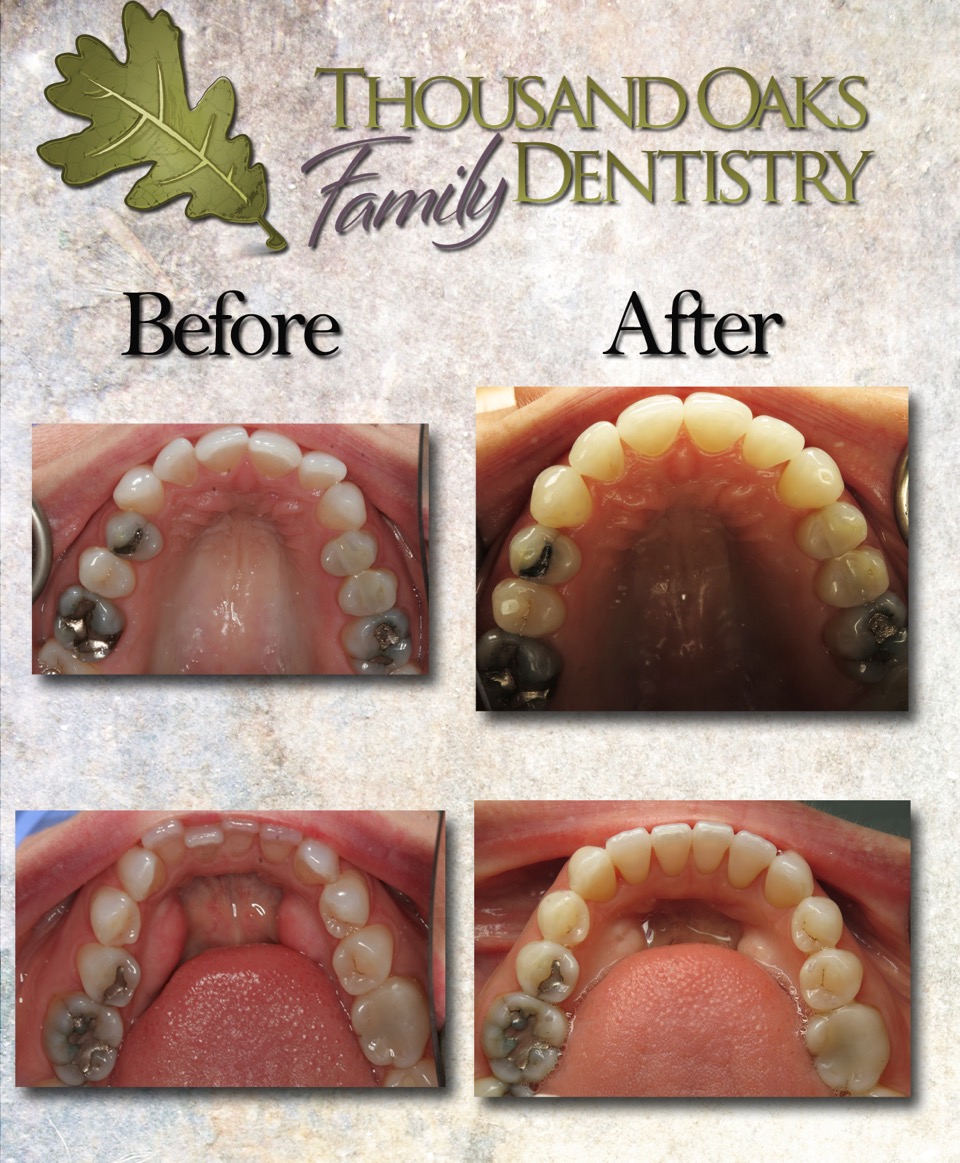Thousand Oaks Family Dentistry Before and After - Upper Front Four Teeth Veneers
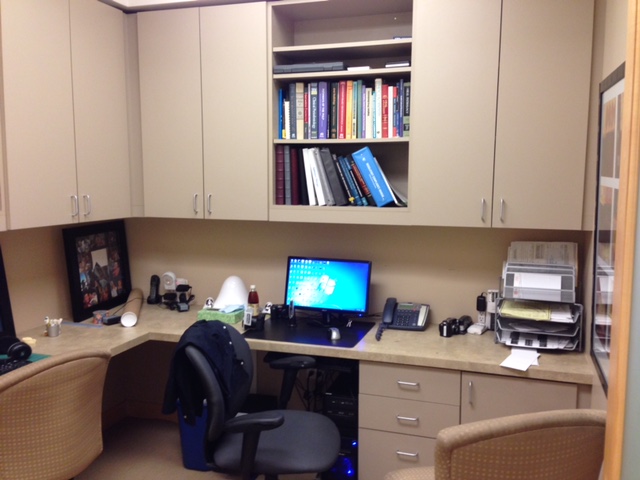
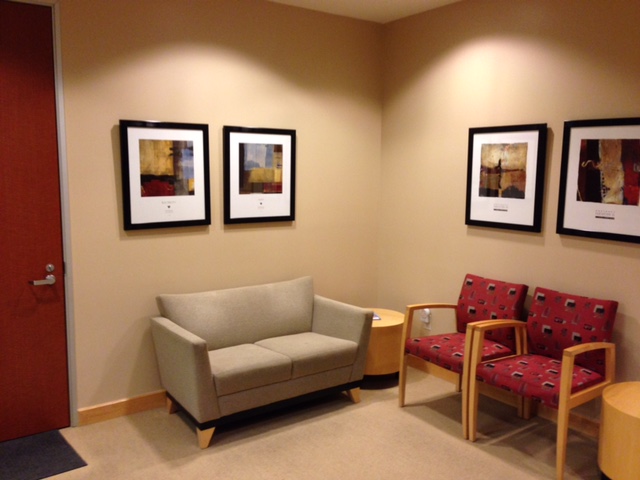
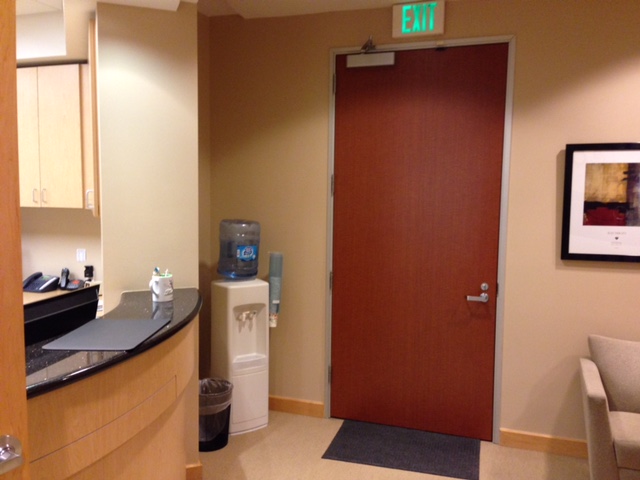
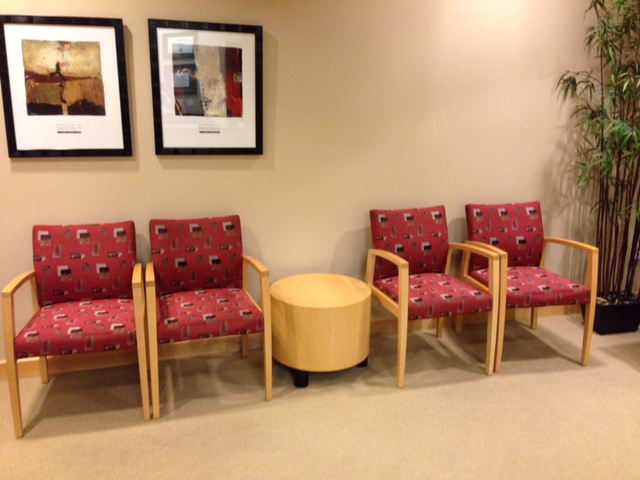

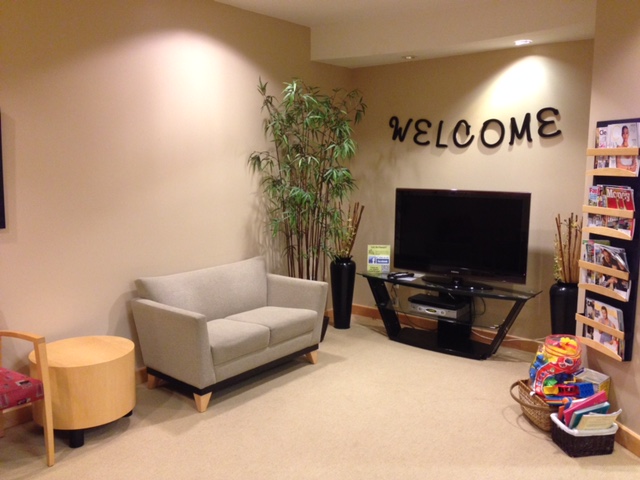
Enjoy these "before" pictures, because our office is getting a new look! Construction is underway to make Thousand Oaks Family Dentistry an even more inviting and relaxing space. In addition to new flooring, paint and decorations, we will be adding a formal consultation room just off of our front desk. The remodel is scheduled to finish August 2nd, and we can barely wait!
Are all night guards the same? Not quite...
Store bought night guards, often called "boil and bite" guards are sold at almost every pharmacy and chain store nation wide. If you have problems with grinding your teeth at night (also called "bruxism"), they may seem like a great way to save your smile. Initially, these products will work as advertised, protecting your teeth from premature wear. However, inexpensive guards can create serious problems with longterm use.
Your jaw muscles can produce a tremendous amount of force, almost 500 Newtons worth. When clenching on a store bought night guard (as you do subconsciously when you grind your teeth at night), these forces are unequally distributed: that is, you will not be biting everywhere at the same time with the same force. This uneven pressure can worsen existing headache/migraine problems or create new ones. You may be saving your teeth, but you will be creating a whole host of other problems!
A professional night guard made by a dentist is fundamentally different from a "boil and bite" night guard. Our guards are custom molded to your bottom teeth using a special clear hard acrylic. The top of the night guard is smooth and contoured so that all your top teeth touch it at the same time with the same force. It is also polished completely smooth, making it feel easy and natural to wear while sleeping. This combination of features allows you to avoid grinding your teeth at night, without introducing new headache pains. If you would like to know more about night guards, please give our office a call!
For many patients, cosmetic veneers are a great way to transform their smile with a short turnaround time. This patient is a grandmother who always wanted to close the gaps in her front teeth. Using veneers, we will both close the gaps and create a beautiful and natural looking smile. We just finished the first part of her treatment, where we prepared her four front teeth, took impressions and made the temporary veneers. She will return in about two weeks to cement the final product!
Before
Before veneers, this patient's teeth had large spacings and were not completely symmetrical.
After
Here is the same patient with her temporary veneers on. You can really see how this procedure will create a more esthetic smile!
The "after" photo shows our patient in acrylic temporary veneers. They are created immediately following the preparation to hold space for the permanent restoration. Right now, our dental lab is working on the permanent veneers, making sure they have the right color, shape and opacity to match the rest of her teeth. We are eagerly awaiting the final product and will post as soon as we deliver it!
A whitening procedure performed at our office in addition to Invisalign invisible braces.
You have probably heard of two main types of bleaching systems offered at dental offices: "ZOOM" whitening and bleach trays. While they both achieve the same results, there are some differences between the two procedures that you should take note of:
ZOOM Whitening is the name brand for Phillip's in-office bleaching system. Here, the entire "whitening" procedure is performed in our exam rooms. We use a blocking material to shield your gums and apply several layers of concentrated peroxide gel to your teeth. A special light is utilized to speed up the chemical reaction by activating the gel. Overall, ZOOM takes about an hour and twenty minutes from being seated in a chair to leaving our office. In the meantime, you will be set up with Pandora music, cable TV or Netflix movies. While this is the fastest way to whiter teeth, it is also the most likely to cause temporary sensitivity issues afterwards.
Bleach Trays are a home whitening system that is administered and monitored by a dentist. You will need an initial appointment for a consultation and impressions of your teeth. Later that day or the following day, your new bleach trays will be ready. You then perform the actual "whitening" at home using a peroxide gel (similar to ZOOM, but lower in concentration). Typically, patients are instructed to whiten for one hour once a day for 14 days, followed by once a month as needed. This type of whitening does work slower, but usually causes less sensitivity issues and can be adjusted to your personal comfort level.
Overall, you can see the similarities and differences between ZOOM and bleach trays. Some of our patients even combine the two procedures- that is, have one ZOOM session and bleach trays made for maintenance (done in the same visit). Since both services rely on the same peroxide gel, they can be used together for additive action. If you have any further questions on bleaching, bleach trays or other cosmetic procedures, please give our office a call!
Check out this great orthodontic treatment that we just finished! Today's patient came to us with some mild crowding and misplacement of their top and bottom teeth. After an exam and consultation, we determined that their orthodontic concerns could be addressed using Invisalign clear braces. Through a series of special trays and "buttons" (small attachments made from filling material that allow the trays to grip the teeth), we perfected this patient's smile without any visible braces. This is only one of the many great Invisalign transformations done at our office. If you would like to know more about Invisalign, who is eligible or how the process works, please give us a call!
Every day, our office sees patients with a wide variety of restorative needs, each of which we try to match on an individual basis. Today's patient came to us with decay in their second premolar that structurally compromised the tooth. Radiographs revealed that there was not enough healthy enamel/dentin left to do a traditional filling or crown, so we had to consider other treatment possibilities. After reviewing options with the patient, it was decided that the tooth should be extracted and replaced with an implant by one of our specialists.
Take a look at how the decayed (darker appearing) tooth was removed and replaced with a titanium implant.
After the implant was placed and healed, we took impressions to make a custom mounting for the final crown (called an abutment). Since the second premolar is far back in the mouth, we had our lab create a gold abutment matched to a porcelain and metal crown. This combination of materials allowed us to create a crown that was both durable and beautiful without risking damage to the opposing teeth. The patient gets all the structural benefits of a metal crown, but with no metal showing. Careful planning provided us with great results; both our office and the patient were ecstatic with the outcome!
The final product! Notice how natural the implant crown looks in the patient's mouth.
Overall, dental implant cases typically take about 8 months from start to finish. The vast majority of this time is spent making sure the implant is healed correctly and properly integrated into bone. In the meantime, there are numerous other considerations and adjustments needed: the appearance of the surrounding gum tissue, the color/shade of the crown and even the shape/material of the underlying abutment. If you are interested in an having a dental implant placed or are just curious about what goes into making an implant, please feel free to call our office! We are always happy to walk you through any of our procedures!
At Thousand Oaks Family Dentistry, we hope everyone gets to spend today with their beloved fathers and/or children. As a special treat, here is our office manager Michael and his son Jonathan. Michael celebrates his very fist Father's Day today! Enjoy the warm weather, fire up the grill and spend some quality time with your family!
Thousand Oaks Family Dentistry is proud to welcome Faith, our newest dental assistant! Faith was born in Detroit, Michigan and attended the University of Hawaii in Maui where she pursued a degree in nursing. A change of careers brought her to Southern California, where she is eager to expand and share her dental knowledge while helping others. In her off time, Faith enjoys spending time with her two daughters, hiking, cooking and running. We are glad to have you with us, Faith!
This month, Thousand Oaks Family Dentistry completed our two-year CPR training course. All clinical staff are required to learn two-person resuscitation methods (in addition to standard CPR) as part of our licensure and operational requirements. Even under the most cautious guidelines, medical emergencies can arise in a dental office. These training sessions help us recognize and manage crises as they happen. For your own knowledge, here are some of the American Heart Association’s most up-to-date recommendations on CPR methods:
- The familiar “ABC’s” of CPR have recently (as of 2010) switched to “CAB.” This means starting with compressions, then checking airways and finally providing artificial breathing.
- Chest compressions should depress the chest about two inches, at a pace of 100 compressions/minute.
- After about 30 compressions, check the airway using a head-tilt/chin-lift maneuver.
- If the individual is still not breathing, provide two rescue breaths, while watching to make sure their chest is rising (signifying the lungs are filling).
- If available, an AED can be critical in restoring normal cardiac function.
- If you are untrained in CPR, just provide compressions (100 compressions/minute, two inch depressions) until paramedics arrive
- Always remember to have someone call 911. This critical step can be easily overlooked in emergency situations.
- For more in-depth instructions, take a look at this great article put out by the Mayo Clinic












